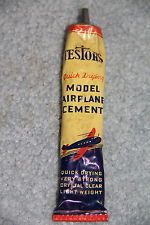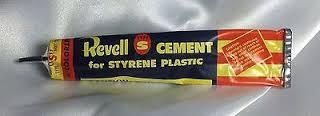Hi
I’ve got a problem that I have not come across before. I am working on an old Monogram C-47 kit from the 70’s. I am having an increasingly difficult time asembling the kit due to the parts not bonding together. I usually use the model master liquid cement for most of my builds but that doesn’t seem to be doing the job with this kit. I have tried testors liquid cement, zap-a-gap super glue, and plasti-weld all with little success. When I glue up the parts, they appear to bond but the joints end up being brittle and then they separate. I’ve never had this problem before. Has anyone experienced this? Is there something in this old plastic that could be causing my problems? Any help is appreciated.
Chris
Three thoughts. Older kits may have mold release oils. Usually that is not a problem for solvent type cements, but it can occasionally be. Try washing the pieces in a mild solution of dish soap or hand soap and water.
I have noticed a decrease in bond strength of solvent type cements lately with new kits. I am not sure whether this is a change in the chemistry of the styrene now being used, or a change in the chemistry of the cements.
Glues are a frequent topic in several of the forums in the Tools, Techniques and References section of these forums. I recommend folks unfamiliar with these forums to check them out occasionally. Changes in the plastic, cements and glues, and paints are common there.
Yes, I have had problems with but glue joints ,as in aircraft fuselages, myself especially with the old kits I build. I make sure there is no paint on the joints and They seem to hold until I start sanding the seams then pop open in the process. Aaaargh.
I agree with Don. Older kits tend to have oil residues from the factory it was made. Back then, it was never an issue to build. I imagine the oils still lingered on the kit after all these years. Old glue “could” also be a culprit as well but in your case, I don’t think that’s the case here. I’m leaning more towards the oil residue on the old kit.
In addition to what was mentioned here previously about clean up of parts, try a “hotter” liquid cement such as Plastruct, Tenax, or Humbrol. I have moved away from Testors Liquid Cement in recent years as it had the bonding power of sugar water in the last couple of bottles that I bought and used. I suspect that they have changed their formula, but who knows.
No doubt, they certainly don’t make 'em like they used to.


I still got the Testors in the orange tube glue going back to the late 70s - early 80s. LOL! And the Testors putty too…
That is very strange as Plast i Weld will melt the plastic fusing the parts together. The same for Tenax. I have built some kits going back as far as the mid to late 60s such as Aurora and Monogram and have not experienced that problem.
I’m using Plasti-weld on my latest project ( an old 1/72 Hobby Craft Osprey ).
I’ve found that when the fuselage joints match well it works fine but in the places where there is a slight gap in the joint ,not so much. I’m talking about a tiny gap that you can barely see light through when held up to the light. After the joints popped open when sanding, Tamiya extra thin reached out and closed the gaps pretty good. Problem solved. The plastic on this kit is plenty thick enough to allow a adequate glueing surface area so that wasn’t the problem.
Jay
I use that Touch n Flow applicator with either Tenax or Plast i Weld and lightly squeeze the parts so a small ridge oozes out. I let it cure then sand it smooth. I have eliminated a good 95% of using putty when I do this.
Yup, Ernie that’s exactly what i did in hopes of not to have to use the putty bit I guess I’m not as practiced as you in the use of Plasti-weld. The sections of the seams that didn’t squeeze out are the problem . Also. my little Osprey isn’t flat on the bottom fsg seam. If you put a straight edge perpendicular to the seam there’s daylight showing in the middle so I had to fill those areas anyway . I know that’s not the fault of the glue.


